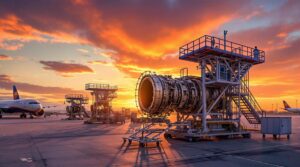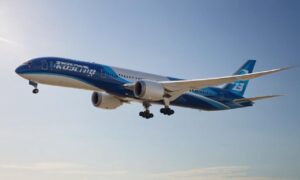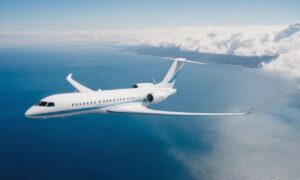When pondering the phrase “what does aircraft entering port mean,” it unveils a multifaceted concept integral to the dynamics of global trade and transportation. In this article, we will delve into the intricacies of this phenomenon, exploring its implications for maritime operations, commerce, and logistical intricacies.
The Basics of Aircraft Entering Port
At its core, the term signifies the arrival of an aircraft at a designated port or harbor. This event marks a crucial juncture in the transportation chain, where air and sea modes of travel intersect. While ports are traditionally associated with maritime vessels, the integration of air transport adds a layer of complexity and efficiency to the overall logistics landscape.
Intermodal Connectivity
The convergence of aircraft and port infrastructure exemplifies the concept of intermodal connectivity. This synergy allows for seamless transfers of goods between air and sea transport, optimizing the supply chain and expediting the movement of cargo across international borders.
Significance in Global Trade
The significance of aircraft entering port extends beyond the realm of logistics. It serves as a linchpin in the global trade network, facilitating the exchange of goods on a scale that transcends national boundaries. This interconnectedness is vital for the flourishing of economies and the meeting of consumer demands on a global scale.
Efficiency and Timeliness
One of the primary advantages of aircraft entering port lies in the expeditious movement of goods. Air transport is renowned for its speed, and when seamlessly integrated with maritime operations, it ensures timely deliveries, reducing lead times and enhancing overall supply chain efficiency.
Challenges and Solutions
While the concept of aircraft entering port brings about numerous advantages, it also presents challenges. These challenges may include congestion, coordination issues, and the need for robust infrastructure. However, through innovative solutions and technological advancements, these hurdles can be overcome, paving the way for smoother operations and enhanced reliability.
Technological Innovations
Advancements such as automated cargo handling, real-time tracking systems, and smart port technologies contribute to mitigating challenges associated with aircraft entering port. These innovations not only streamline processes but also enhance the overall safety and security of transported goods.
In conclusion, the phrase “what does aircraft entering port mean” encapsulates a dynamic and pivotal aspect of modern transportation and trade. By embracing the synergy between air and sea transport, nations and businesses can unlock new levels of efficiency, connectivity, and economic growth. Understanding the intricacies of this intersection is key to navigating the complex landscape of global logistics.
Exploring Environmental Impacts
Amidst the intricate dance of aircraft entering port, it is imperative to consider the environmental ramifications of this convergence. The carbon footprint generated by air travel and its intersection with traditional maritime activities raise questions about sustainability and the ecological footprint of global trade.
Sustainable Practices and Green Initiatives
Faced with environmental concerns, the industry is increasingly adopting sustainable practices and green initiatives. From biofuels for aircraft to eco-friendly port infrastructure, stakeholders are actively seeking ways to minimize the environmental impact of aircraft entering port, paving the way for a more sustainable future.
| Environmental Impact | Solutions |
|---|---|
| Air travel emissions | Investment in biofuels, electric aircraft, and carbon offset programs |
| Port activities impact on marine life | Implementation of eco-friendly port designs, artificial reefs, and marine conservation efforts |
Frequently Asked Questions
-
What are the key challenges associated with aircraft entering port?
-
How do technological innovations contribute to addressing these challenges?
-
What role does sustainability play in the context of aircraft entering port?
-
How does intermodal connectivity impact the efficiency of the supply chain?
As aircraft and maritime operations intertwine, navigating the complex web of international and local regulations becomes paramount. Compliance with safety standards, customs protocols, and trade regulations is essential for the smooth transition of goods between different modes of transportation.
Innovations in Customs and Compliance
Modernizing customs procedures and compliance mechanisms is crucial for the efficient movement of goods. Technologies like blockchain, artificial intelligence, and electronic documentation systems play a pivotal role in enhancing transparency, reducing delays, and ensuring adherence to regulatory requirements.






